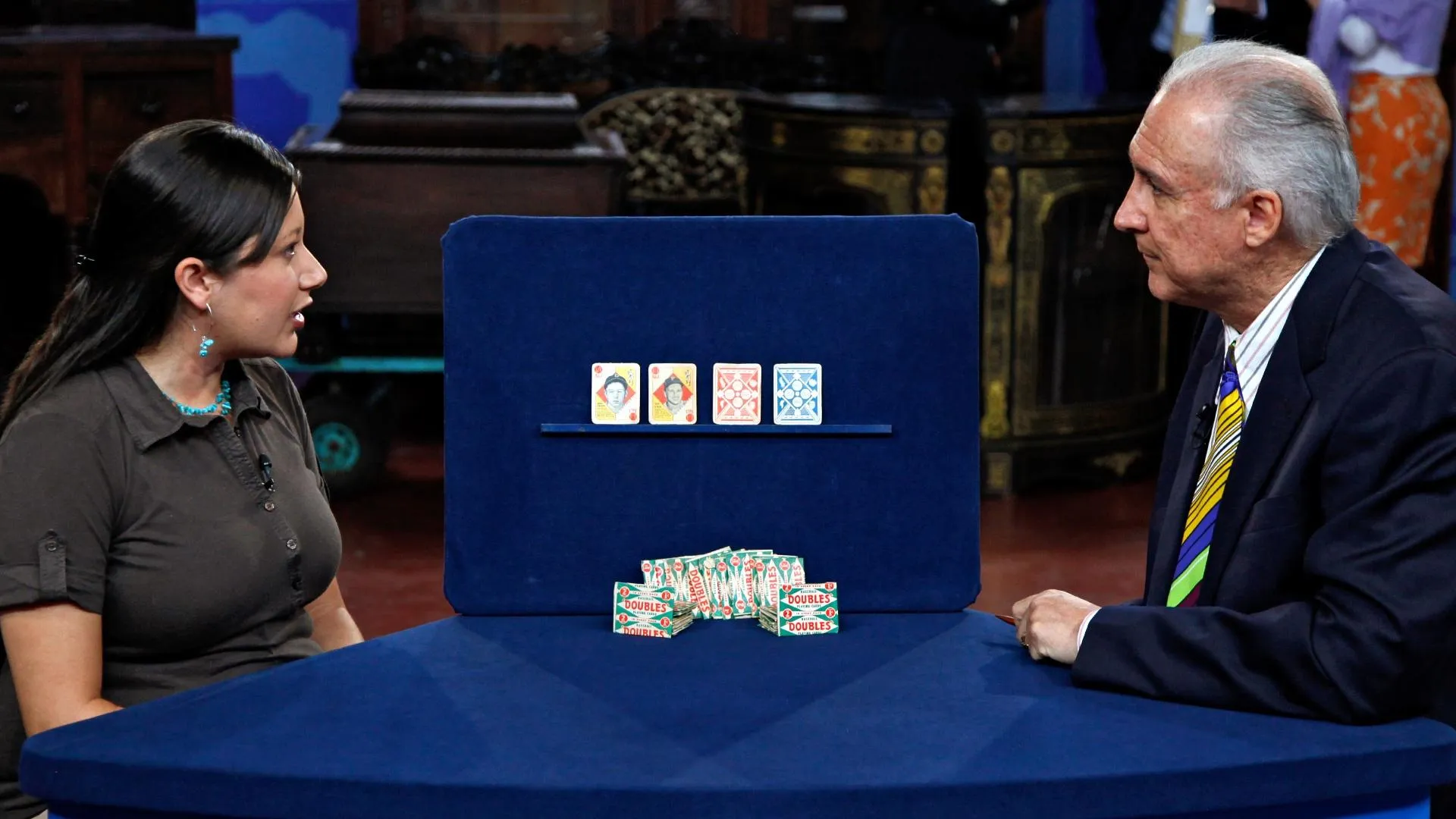GUEST: They're oyster plates, and I think they're from the Hayes administration. And they were given to me by my husband's stepmother. They were given probably to her from her mother, and her mother was from St. Louis, Missouri.
APPRAISER: And how many do you have?
GUEST: I have ten.
APPRAISER: You have ten, but you only brought three of them to us today.
GUEST: Correct.
APPRAISER: Okay, and do you have any clue what they might be worth?
GUEST: Well, I've seen some other oyster plates that were worth about $20 to $100 apiece.
APPRAISER: Well, let's talk about these plates for a second. On the back we see a variety of marks. One is the Haviland Company, and the Haviland Company is the company that did produce the plates. Another is a signature that says "Theo R. David," who was the designer of these particular plates. We also see an eagle mark. And what these plates are, they are copies of the plates that were used in the White House under Rutherford B. Hayes.
GUEST: Okay.
APPRAISER: So the Haviland Company spent a lot of money developing and creating this pattern. After that took place, the Haviland Company made plates for commercial consumption. Okay, they made these and took them out to the market. And they are highly collectible. There's a whole set of this china, and of this set, the oyster plates are the most common piece that comes out of that set. It is fairly rare to find a set as large as ten pieces. Often times, the collectors of oyster plates don't need to have a whole set, so we're not necessarily going to ascribe a higher level of value to them. So you saw a similar plate in an antique store for $2,200. That actually is very plausible. The last set that did sell at auction sold for $2,300 to $2,400 per plate. So auction estimates today, we would anticipate them selling for between $4,000 and $6,000 for the three, and between $15,000 and $25,000 for all ten.
GUEST: Thank you.
APPRAISER: Okay?
GUEST: I appreciate that.



